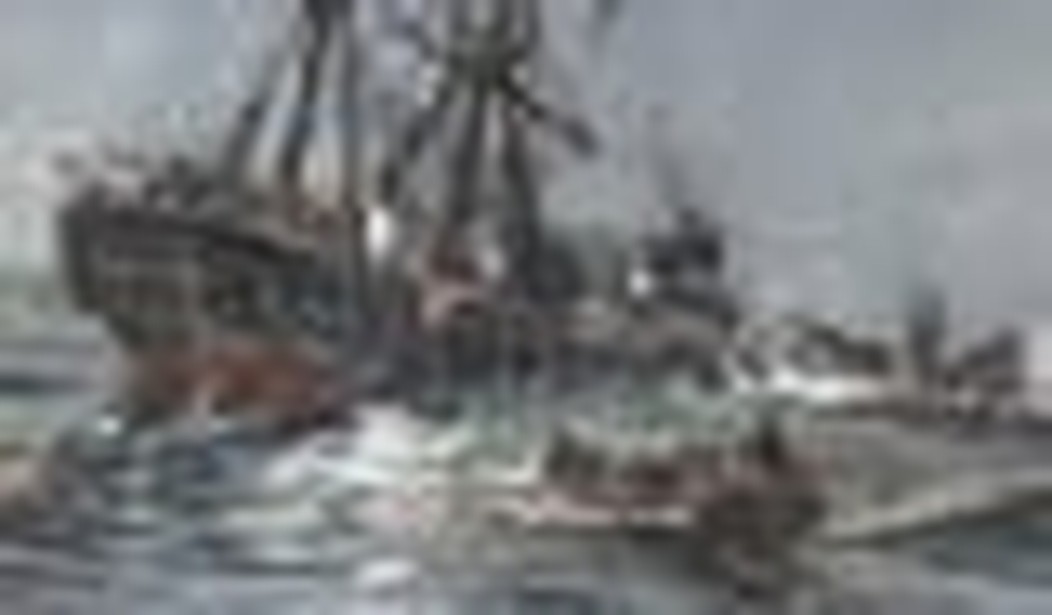Winston Churchill’s joke in response to a question about why he was traveling on an Italian cruise ship when a British one was available appears to be prescient commentary on the Concordia disaster:
There are three things I like about Italian ships. First, their cuisine, which is unsurpassed. Second, their service, which is quite superb. And then, in time of emergency, there is none of this nonsense about women and children first.
Perhaps not. But it turns out the Italians are hardly alone in jettisoning the old rule, which was never quite as universal as we may think it was. Even the British, who originated the precept, hadn’t always been able to follow it. And although our mental template is based on those nobly self-sacrificing men of Titanic, conditions don’t always favor that kind of heroism even if the will to demonstrate it is there.
Churchill was correct in implying that the nautical dictum “women and children first” is more traditionally British than international. But it’s not an actual law, nor is it so very ancient. It was the British troop ship Birkenhead that started it all in 1852, when it went down after hitting a rock near Cape Town, South Africa.
Birkenhead was hardly a typical passenger ship. Those on board were almost all male and members of the military: 138 ship’s officers and crew and 480 army personnel, as well as approximately 20 women and children who were relatives of some of the officers. Many of the men had been drowned in their berths when the ship began to flood rapidly, but the rest managed to muster on deck and maintained military order while the woman and children were placed in two small cutters and a lifeboat. The ship hit the rocks again and immediately broke in two, its bow sinking rapidly and its stern following just a few minutes later after the order had been given to abandon ship. But some of the officers realized that swimming to the lifeboats would swamp them and endanger the women and children in them, and ordered the men to stand fast on deck as the ship went down.
That’s the mental picture that captured the imagination of those who heard about it from the survivors. And hear they did; about 170 men survived to tell the tale, an astonishingly high number under the circumstances — which included sharks that had consumed many of the men as the women and children watched helplessly from the boats, and a swim of two miles to the nearest shore for those men the sharks had passed up.
The incident became justly famed in Britain as an example of British fortitude, decency, and discipline. Kipling later got into the act and wrote a poem offering up this tribute:
But to stand an’ be still to the Birken’ead drill
is a damn tough bullet to chew,
An’ they done it, the Jollies — ‘Er Majesty’s Jollies —
soldier an’ sailor too!
Their work was done when it ‘adn’t begun; they was younger nor me an’ you…
The very special circumstances of the Birkenhead sinking that helped lead to such heroism were highly unlikely to repeat themselves, of course. Virtually all the men were members of the British military, accustomed to following orders and even being asked to risk their lives. The number of women and children was tiny compared to the number of men. The ship sank exceptionally quickly — the whole thing probably taking less than twenty minutes from start to finish — and the extreme nature of the emergency was evident from the start.
By the time of the sinking of Titanic some sixty years later, most of the British men aboard would almost certainly have heard the story of the celebrated “Birkenhead drill,” and many of the other passengers probably had as well. What had originally been an example of exceptional bravery and military discipline had now become the expectation for male civilians: to allow women and children into the lifeboats first and face a high probability of death themselves as a consequence.
The unquestionable courage of so many of the males on Titanic may have been aided by the fact that — unlike the dire situation Birkenhead faced from the start — the extremity of the danger was not immediately clear and was slower to develop. Titanic took about two and one-half hours to sink, and was not listing alarmingly at the outset. In fact, a great many lifeboats were launched with empty places to spare at the beginning; there seemed to be no special rush. It was only later that people were clamoring to board the boats.
Contrast that to another well-known naval disaster that also involved similarly enormous loss of life, but which for some reason has been less prominent in movies and the current public imagination: the sinking of Lusitania in 1915. From the moment the ship was hit by a German torpedo, its crew and passengers had a mere eighteen minutes to try to escape before it sank — similar to Birkenhead but different in that it involved civilian passengers. Even though Lusitania was British, too, and occurred a mere three years after the Titanic disaster, the differences in mortality were stark as far as gender was concerned: 72% of the woman on board Lusitania died, while only 22% of the men lost their lives — a near-reversal of the figures for Titanic, where 28% of the women died compared to 80% of the men.
Why the great difference between the two ships? After all, they were both British, and carried a roughly equivalent passenger load. It seems that not only was there comparatively little time to spare aboard Lusitania, but the ship was listing badly almost from the start of the crisis. This combination of factors made it nearly impossible to launch most of its lifeboats or to follow the Birkenhead drill in doing so — although, unlike Titanic, the ship was equipped with enough lifeboats to have accommodated all of its passengers.
Of the few boats that did get rapidly launched from the mortally wounded Lusitania as it was going down, several overturned and spilled their load of humanity into the sea. Brute strength, the ability to swim, and resistance to the coldness of the water seem to have been mostly what separated the quick from the dead, rather than any attempt at chivalry.
What does any of this tell us about Concordia, a disaster in which even more people were potentially at risk (about 4200) than on the other ships, but only a very small number lost their lives? Does “women and children first” still hold as a maritime disaster precept?
The answer to the latter question appears to be “not exactly.” Although nothing stops people from behaving that way if they so choose, there’s no official directive for passengers to do anything other than assemble where they’re told to in an orderly fashion and follow instructions, which are not gender-specific. Richard Pellew, chief surveyor for the southeast region at the Maritime and Coastguard Agency, had this to say about it:
Women and children first is a Victorian hangover. … It would normally be passengers first and crew last — you need them in emergency procedures to get the passengers off. Most cruise ships have a system where you move passengers to a muster station then move them into the life-saving appliances and take them off sequentially. The last people tend to be the specialists who are looking after the emergency systems.
We don’t know all the facts yet, but reports are that on Concordia the order to launch the lifeboats was delayed until the ship had already started to list significantly, which then hampered the process. Some of the confusion may also have come from the fact that the accident occurred so early in the cruise that there had been no safety drill yet. The survival of nearly all the passengers may be a tribute to the relatively long amount of time the crew had in which to launch the boats, as well as the fact that the ship never completely sank.
So has the “woman and children first” rule finally become “nonsense,” as in Churchill’s quip? In our current world of feminism and equal rights, it’s become harder and harder to continue to justify the Birkenhead drill, except for the need to protect future generations and those who bear them.
But that’s no small thing. As science fiction writer Robert Heinlein wrote in his novel Time Enough For Love:
All societies are based on rules to protect pregnant women and young children. All else is surplusage, excrescence, adornment, luxury, or folly, which can — and must — be dumped in emergency to preserve this prime function.
That is still true in a larger sense, although it needn’t apply to the passengers on every ship that meets with disaster. But the society that ignores it completely is a society that may ultimately depopulate itself.









Join the conversation as a VIP Member